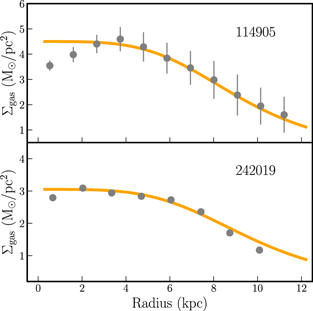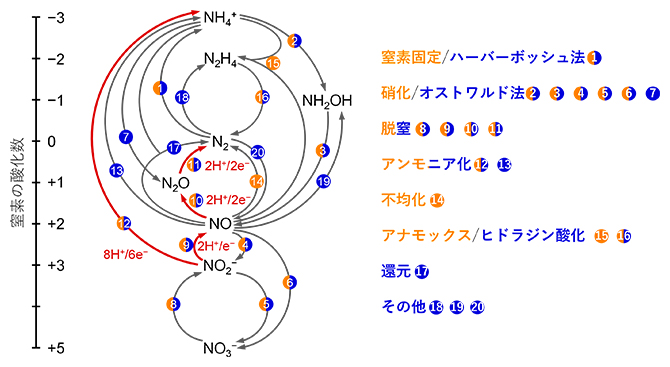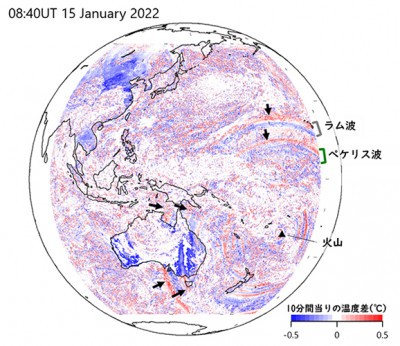2022-09-12 カリフォルニア大学リバーサイド校(UCR)
研究者たちが調べた超拡散銀河は、天の川銀河などに比べると、質量がかなり小さいが、ガスをたくさん含んでいて、恒星の質量よりもガスの質量が大きいという、天の川銀河とは逆の現象が見られる。また、超拡散銀河はサイズが大きいことも特徴である。
暗黒物質ハローは、通常の銀河のハローに比べて、内部の質量が非常に少ない。
<関連情報>
- https://news.ucr.edu/articles/2022/09/12/why-are-dark-matter-halos-ultra-diffuse-galaxies-so-odd
- https://iopscience.iop.org/article/10.3847/1538-4357/ac8875
ガスに富む孤立超拡散銀河の奇妙なダークマター・ハロー The Odd Dark Matter Halos of Isolated Gas-rich Ultradiffuse Galaxies
Demao Kong, Manoj Kaplinghat, Hai-Bo Yu, Filippo Fraternali, and Pavel E. Mancera Piña
The Astrophysical Journal Published: 2022 September 12
DOI:https://doi.org/10.3847/1538-4357/ac8875

Abstract
We analyze circular velocity profiles of seven ultradiffuse galaxies (UDGs) that are isolated and gas-rich. Assuming that the dark matter halos of these UDGs have a Navarro–Frenk–White (NFW) density profile or a Read density profile (which allows for constant-density cores), the inferred halo concentrations are systematically lower than the cosmological median, even as low as −0.6 dex (about 5σ away) in some cases. Alternatively, similar fits can be obtained with a density profile that scales roughly as 1/r2 for radii larger than a few kiloparsecs. Both solutions require the radius where the halo circular velocity peaks () to be much larger than the median expectation. Surprisingly, we find an overabundance of such large- halos in the IllustrisTNG dark-matter-only simulations compared to the Gaussian expectation. These halos form late and have higher spins compared to median halos of similar masses. The inner densities of the most extreme among these late-forming halos are higher than their NFW counterparts, leading to a ∼1/r2 density profile. However, the two well-resolved UDGs in our sample strongly prefer lower dark matter densities in the center than the simulated ones. Comparing to IllustrisTNG hydrodynamical simulations, we also find a tension in getting both low enough circular velocities and high enough halo mass to accommodate the measurements. Our results indicate that the gas-rich UDGs present a significant challenge for galaxy formation models.



